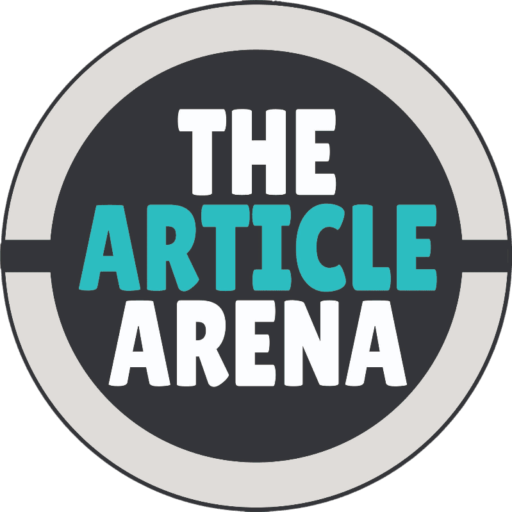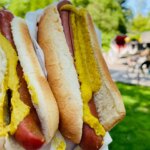On Aug. 21, 2017, Kiki Smith’s teenage sons giddily ready to observe the partial photo voltaic eclipse in Rochester, N.Y. As Ms. Smith listened to their chatter, she felt excluded.
“I felt very alone,” she stated. Ms. Smith was recognized with a degenerative situation as a baby and misplaced the final of her imaginative and prescient in 2011. The native buzz across the eclipse, and the nationwide media consideration, unexpectedly touched a nerve.
The eclipse “was about experiencing a historic second in group, and I wasn’t a part of that,” she stated.
Ms. Smith, 52, who works for a group improvement group in Rochester, decided to do issues in a different way for the April 8 whole eclipse that’s passing by means of her metropolis. She helps to prepare a public gathering that prioritizes accessibility for folks with imaginative and prescient loss. Her occasion will embody specifically designed gadgets named LightSound that translate altering gentle depth into musical tones, permitting blind and visually impaired folks to pay attention because the sky grows darkish after which brightens once more.
Throughout this eclipse, Ms. Smith stated, “I will likely be with group. And I’ll have at my fingertips all of those fabulous assets to expertise what I felt I missed final time.”
Folks throughout the USA with restricted imaginative and prescient or blindness will expertise the eclipse with the help of about 900 LightSound gadgets distributed by a staff led by Allyson Bieryla, a Harvard College astronomer.
The instrument was developed in 2017 by Ms. Bieryla, the supervisor of Harvard’s undergraduate astronomy lab and telescopes, and Wanda Díaz Merced, an astronomer who’s blind and on the time was with the Harvard-Smithsonian Middle for Astrophysics.
After studying in regards to the wants of visually impaired astronomers, Ms. Bieryla outfitted the lab she manages with a printer that creates three-dimensional, tactile representations on heat-sensitive paper of photos captured by telescopes. Dr. Díaz Merced had for greater than a decade been conducting analysis utilizing sonification, during which mathematical knowledge is translated into sounds.
The 2 determined to create a tool to sonify that summer season’s eclipse. Daniel Davis, the director of Harvard’s science demonstration lab, produced a prototype.
On Aug. 21, as the full eclipse handed over her viewing spot in Wyoming, Ms. Bieryla streamed the sound from the gadget through the web.
Dr. Díaz Merced was then in Cape City as a analysis fellow with the Workplace of Astronomy for Growth. Throughout the eclipse, she shared the stream with college students on the Athlone College for the Blind.
“After they heard it, they jumped and so they clapped,” she stated. “It was the primary time they had been capable of take heed to such an occasion, so it was very significant.”
Roughly the scale of a paperback novel, LightSound comprises a lightweight sensor that measures the sky’s brightness in lux, or models of illumination. Contained in the case, code on a microcontroller board assigns specific sounds to numerical ranges of lux. A synthesizer board then generates a flute sound for intense gentle, a clarinet sound that lowers in pitch as the sunshine fades, and a sluggish, percussive clicking through the darkness of totality. Listeners use headphones or a speaker to listen to the gadget’s sonification.
Forward of the full photo voltaic eclipse that crossed Chile and Argentina on July 2, 2019, Ms. Bieryla’s staff, funded by the Worldwide Astronomical Union, despatched gadgets or their parts to colleagues in each nations. At an occasion on the Santiago planetarium, organizers related a LightSound gadget to an amplification system so the greater than 1,500 attendees — amongst them, individuals who had been blind — might hear it.
“It’s not solely devoted for the visually impaired,” stated Paulina Troncoso, director of the undergraduate astronomy program on the Universidad Central Región de Coquimbo, who led the LightSound portion of that occasion. “It’s additionally for everybody.”
The staff gives LightSound without spending a dime and has posted the pc code and directions for constructing the gadgets on-line. Ms. Bieryla’s group continues to tinker with the product to enhance customers’ expertise. For instance, the 2017 prototype emitted a slightly shrill tone. In 2018, Sóley Hyman, then a Harvard undergraduate, redesigned the gadget to include the synthesizer board and developed the code for its flute, clarinet and clicking sounds.
Certainly one of Dr. Troncoso’s college students experimented with reprogramming the board to make use of a simplified instrumental model of the 1997 Daft Punk tune “Across the World.” In reducing gentle, the synthesized devices change off one after the other, leaving solely the sound of the drum machine.
Final 12 months, Ms. Bieryla invited Elliot Richards, an engineer at Harvard, to revamp the gadget with a printed circuit board as an alternative of a tangle of wires. The change makes constructing the gadgets a lot simpler, and Ms. Bieryla and Ms. Hyman, who’s now a graduate pupil on the College of Arizona, have taught volunteers to solder and assemble the supplies at a number of workshops.
As soon as folks perceive how LightSound makes the eclipse accessible, they’re keen to assist, Ms. Bieryla stated.
“That’s been heartwarming to me — simply the quantity of labor that folks have given to this venture and the thrill round it,” she stated.
On a balmy Saturday in March, a dozen volunteers sat hunched over tables in a classroom on the Austin Nature & Science Middle in Texas, utilizing soldering irons to connect parts to the circuit boards. The acrid scent of sizzling metallic wafted out the open door because the trill of a mockingbird in a close-by tree floated in. As volunteers examined their accomplished gadgets, the overlapping notes of flute and clarinet resembled the din of an orchestra tuning up earlier than a efficiency.
Mark Sullivan, who works as a welder, realized in regards to the workshop by means of the native astronomy membership and determined to assist. Mr. Sullivan had witnessed the August 2017 whole photo voltaic eclipse in Nashville.
Folks like him who can see “simply take it as a right, with the ability to have a look at the solar for the eclipse,” he stated, including: “You need to be certain that all people has the chance.”
Ms. Bieryla’s staff acquired greater than 2,500 requests for LightSound gadgets. She despatched as many as she might to occasion organizers equivalent to Ms. Smith in Rochester; to libraries, museums, universities and senior facilities; and to varsities for the blind.
In Austin, the Texas College for the Blind and Visually Impaired will host an “eclipse extravaganza” on April 8 with tactile diagrams of eclipses in addition to LightSound gadgets. Yuki Hatch, a twelfth grader on the faculty, stated the LightSound gadget means she gained’t must depend on her restricted imaginative and prescient to expertise the full eclipse.
Ms. Hatch loves astronomy, and in October, she watched the annular eclipse that crossed by means of Texas. However she noticed solely a dot that dimmed and brightened.
The LightSound “will really give me extra info than what I can probably see with my eyeballs,” she stated.
Ms. Hatch plans to earn a pc science diploma and develop expertise NASA can use to ship blind folks to area.
When Ms. Smith was a freshman in faculty, she muddled by means of an astronomy course till her imaginative and prescient loss made it too tough. The LightSound gadget alerts an encouraging shift towards help and inclusion, she stated.
Enabling those that can’t see an eclipse to listen to it represents “a possibility for youths to not hand over on these sorts of issues,” she added.








